PROTECT YOUR DNA WITH QUANTUM TECHNOLOGY
Orgo-Life the new way to the future Advertising by AdpathwaySiberian pea shrubs are extremely adaptable shrubs and small specimen trees. Low maintenance and resilient, they withstand difficult conditions like frigid winters, strong winds, and drought. They hail from Siberia and Manchuria, where they need to be tolerant of extreme conditions to thrive.
Peashrubs bring their sturdy form to areas that other plants find challenging and make good wind breaks, field boundaries, screens, and buffers across various growing conditions. Employ them as large hedges or informal borders. Their sunny yellow pea flowers in spring are showy, followed by small, lean pods that provide forage for birds and wildlife.
Siberian Pea Shrub Overview
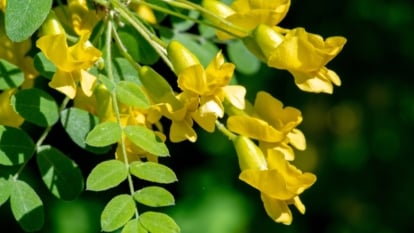
|
Plant Type Deciduous shrub Family Fabaceae Genus Caragana Species arborescens |
Native Area Eastern Russia, Northern China Exposure Full sun to partial shade Height 15-20’ Watering Requirements Low |
Pests & Diseases Spider mites, blister beetles, aphids, and leaf spot Maintenance Low Soil Type Average Hardiness Zone 2-7 |
What are Siberian Pea Shrubs?
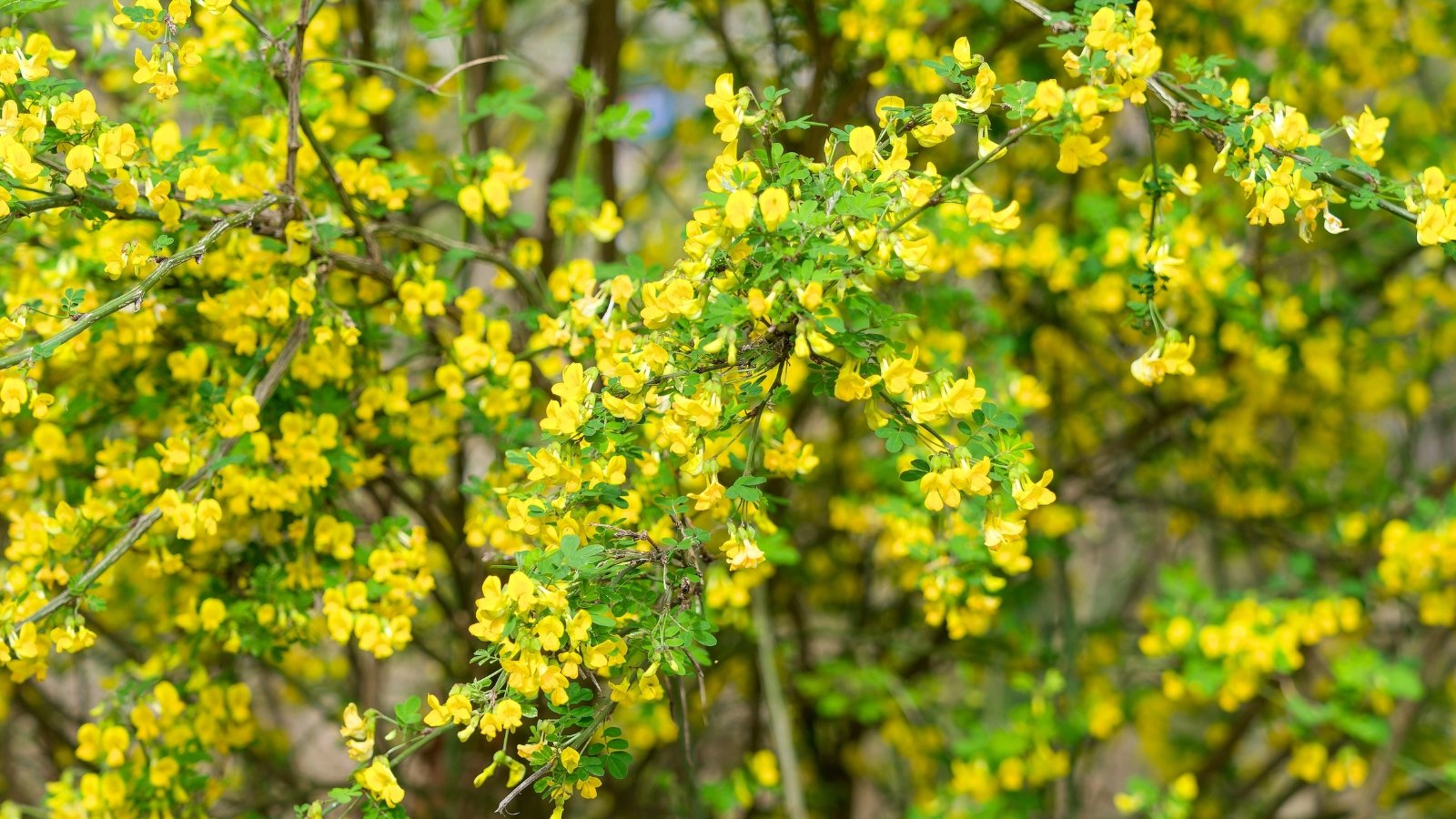 Golden blooms brighten spring before pods fill in summer.
Golden blooms brighten spring before pods fill in summer.Siberian pea shrubs are large shrubs or small specimen trees, depending on pruning, with golden yellow blooms in the spring. In the pea family (Fabaceae), the legumes fix nitrogen in the soil, improving the structure and access to nutrients. Low maintenance and easy to grow, they need little, if any, added resources to grow.
The early season blooms of pea shrub attract pollinators, while the summer pods offer forage and the branches provide shelter for fowl and other species. They tolerate extreme cold, though won’t thrive in extreme heat or humidity of southern climates.
Siberian peas create a windbreak or buffer to shelter other ornamentals, from shrubs to perennials. Use them as a protective backdrop, as hedging, or to denote a boundary. They create a mixed hedge with other rugged species like wild roses and evergreens like juniper, cedar, and spruce.
The vigorous, seemingly indestructible species is invasive in parts of North America, including areas of the Midwest and West, where it becomes a noxious weed. Check its status in your area before planting pea shrubs to make sure it stays within bounds.
Characteristics
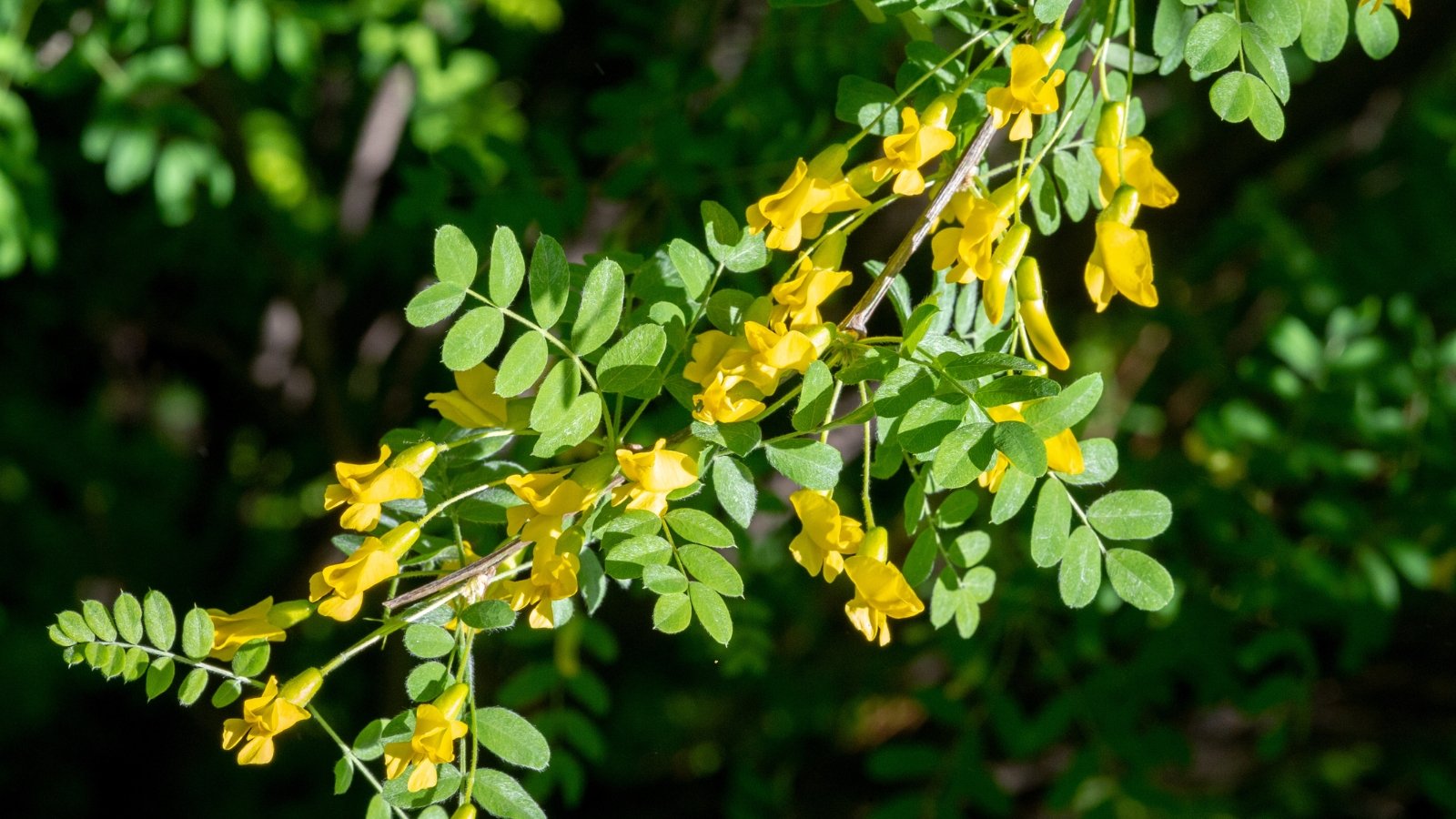 Buds show up on last year’s wood, not new.
Buds show up on last year’s wood, not new.Caragana arborescens is multistemmed with a rounded habit. The upright branches create a full, leafy shrub or handle pruning to develop as a small specimen tree. They grow 12 to 15 feet wide at maturity.
In May, yellow pea flowers emerge in clusters on the ends of stems. Buds set on old wood (the last season’s growth). Post-flowering, little green pea pods develop. The slender pods reach three inches long and ripen in early July. As they brown and dry, they burst and crack, releasing the seeds.
The shrubs lend a dense, fine texture with their feathery-leaved stems. The leguminous leaves line the stems at three inches long. Each compound leaf contains four to six leaflets in fresh green.
Native Area
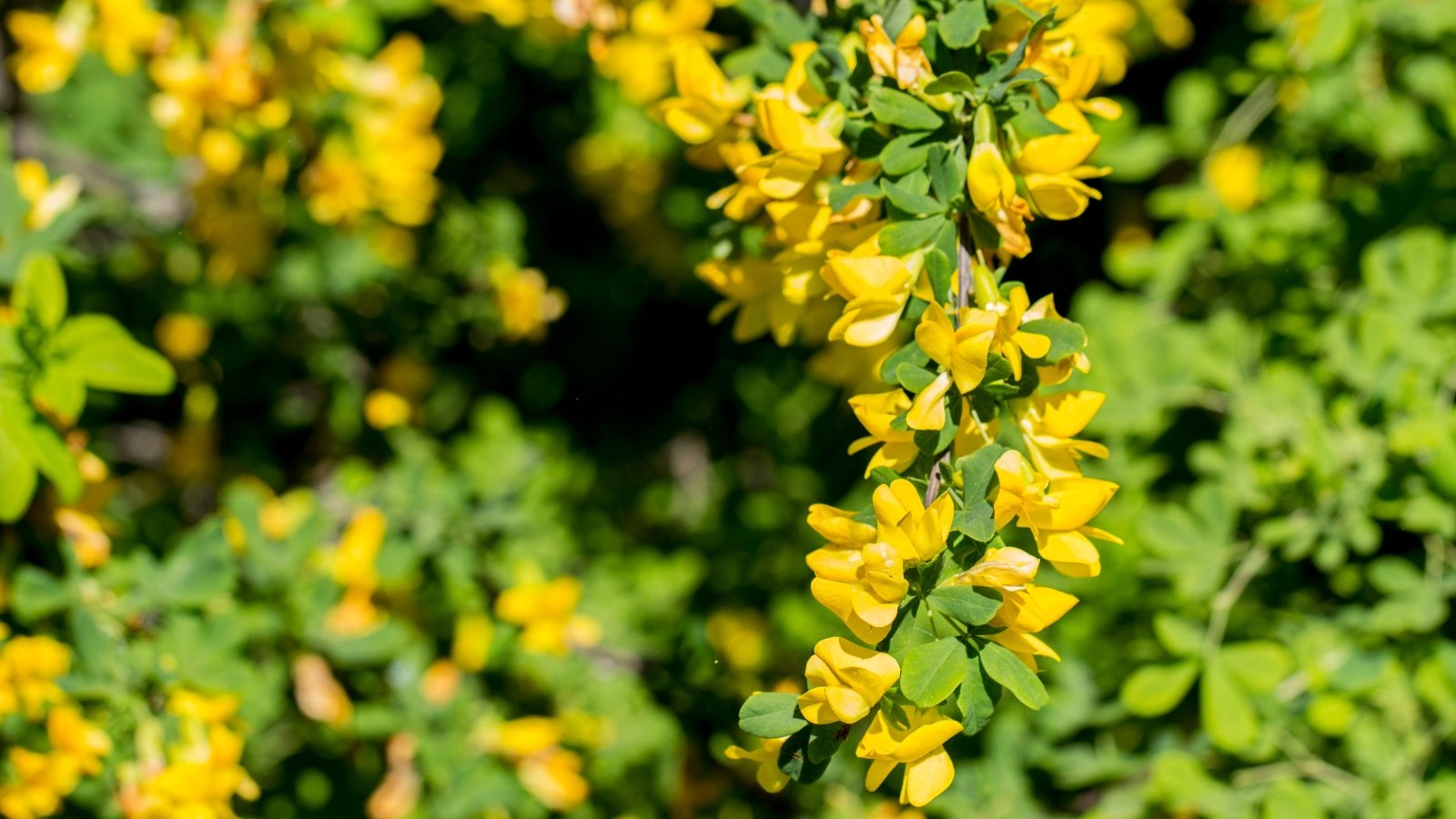 Holds up through wild seasons without batting a leaf.
Holds up through wild seasons without batting a leaf.The hardy species is native to Siberia in Russia and Manchuria in China. These vast regions encompass a variety of climates, from warm summer days to continental subarctic winter nights. With the exception of high heat and humidity and standing water, Caragana arborescens handles seasonal fluctuations.
Planting
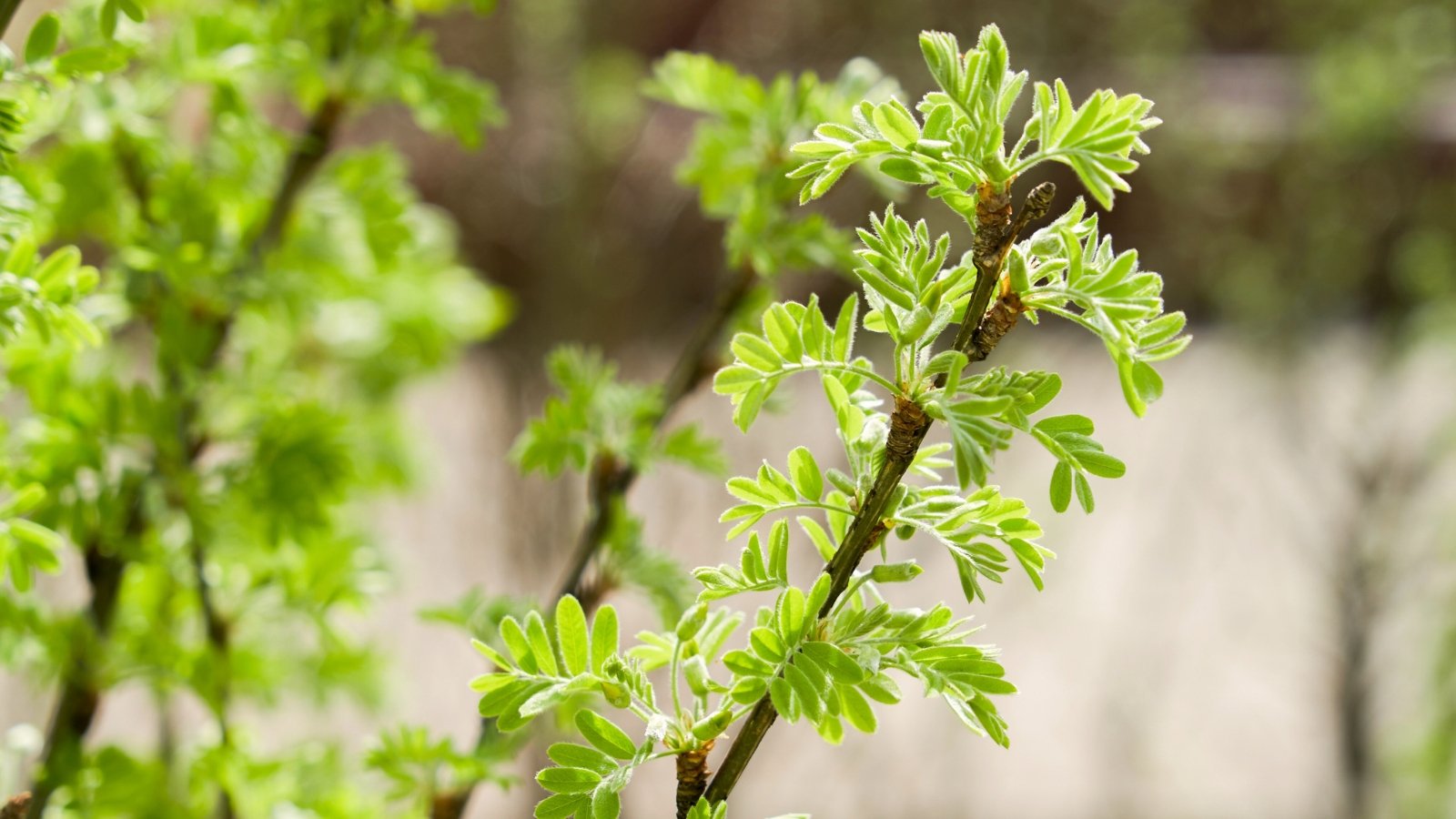 Needs room to stretch, so don’t crowd the planting.
Needs room to stretch, so don’t crowd the planting.The cool conditions of spring and fall are prime planting times, with their moderate temperatures and plenty of seasonal moisture. The moderate seasons give the shrubs time to establish before the temperature extremes of summer and winter, but you can plant the ornamentals any time of year as long as the soil is workable and even moisture is available.
Plan on a 5 to 10-foot spacing, depending on the variety, to allow for mature growth. Dig a hole twice as large as the nursery pot to loosen the soil for developing roots. Plan to water for even moisture as young plants establish over the growing season.
How to Grow
The chief merit of Siberian pea shrubs is their ability to grow across challenging sites. In the right situation, they need few extra resources to thrive.
Light
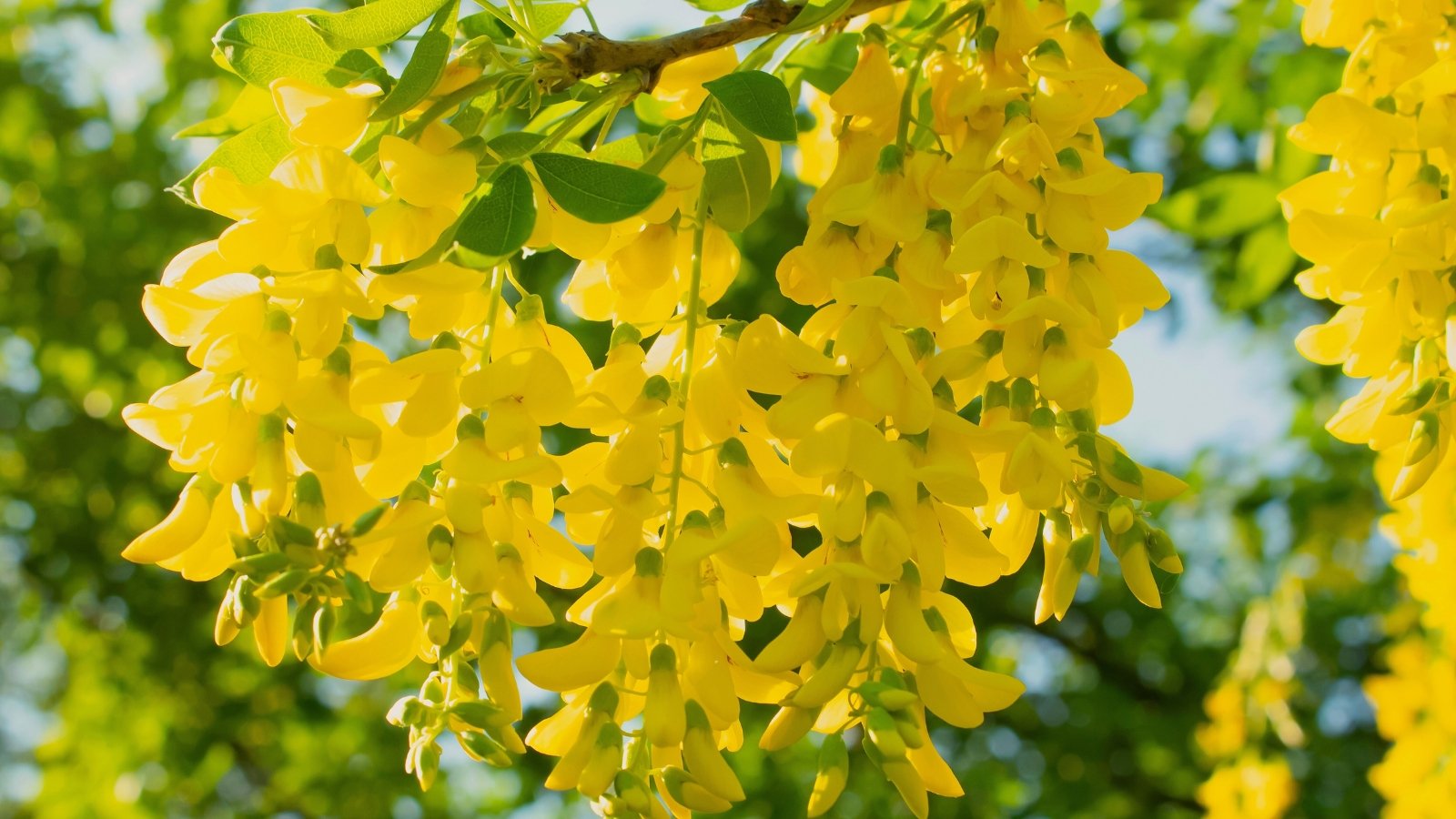 Really shines when soaking up six sunny hours daily.
Really shines when soaking up six sunny hours daily.Caragana arborescens grows best in full sun, with at least six hours of daily sunlight. They perform well in open fields, informal boundaries, and rock gardens.
The species tolerates some shade, too, with four or more hours of sun. Too much shade slows growth and flowering.
Water
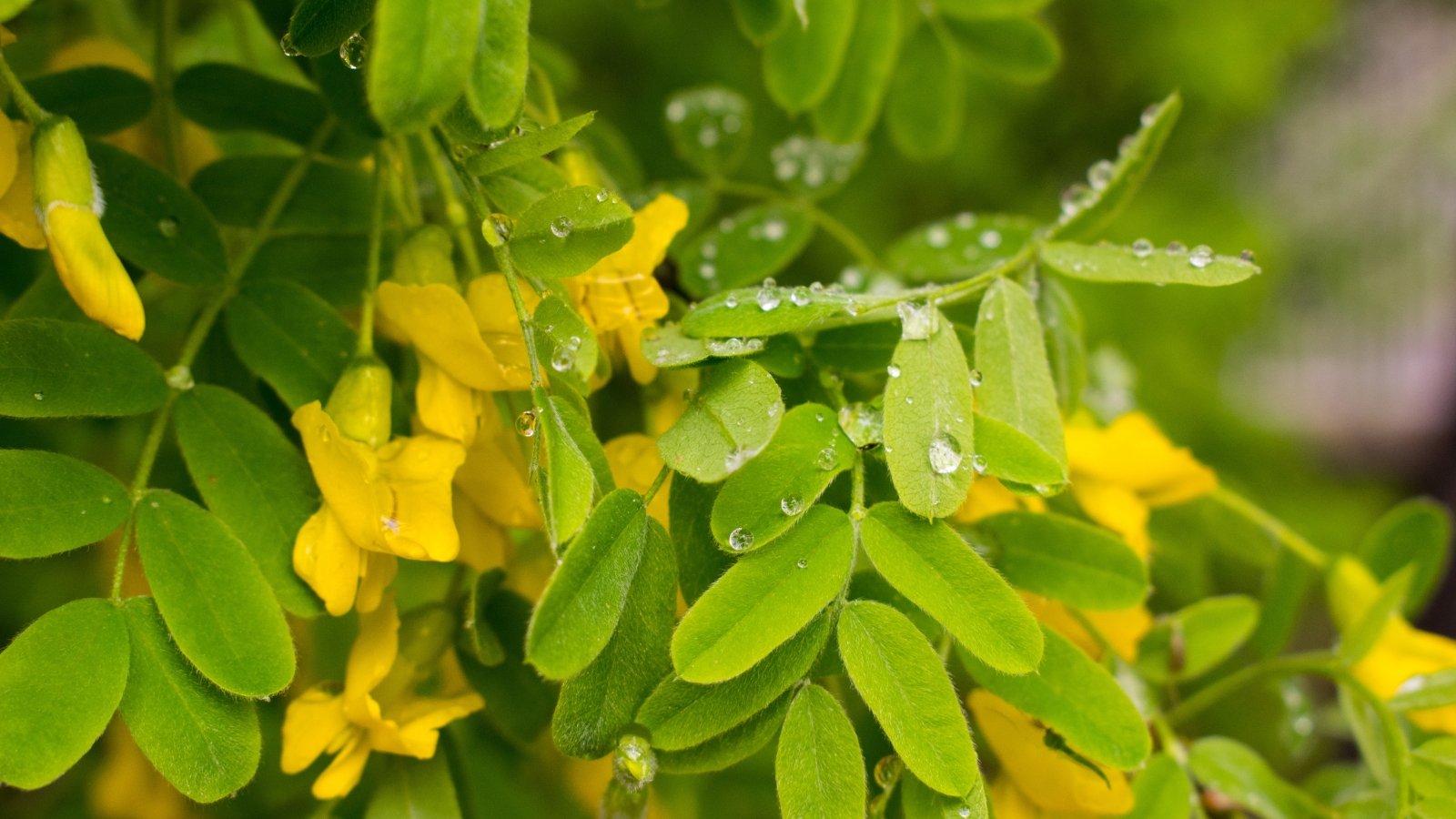 Tough enough to breeze through a summer dry streak.
Tough enough to breeze through a summer dry streak.The resilient shrubs grow well in sites with average to dry conditions. Drought-tolerant, they withstand dry spells once established.
Water newly planted shrubs as they establish when the top few inches of soil are dry.
Soil
 Doesn’t mind tough soil, just asks for good drainage.
Doesn’t mind tough soil, just asks for good drainage.The woody shrubs need well-drained soils. They adapt to various types, including slight alkalinity, as long as there’s good drainage. They even tolerate heavy clays, but amend with compost to improve drainage if water retention is an issue. The peashrubs decline in overly saturated soils for prolonged lengths of time.
Siberian pea isn’t fussy about soil type, texture, or richness (given good drainage). It also tolerates salts from deicing along roadsides and walkways.
Temperature and Humidity
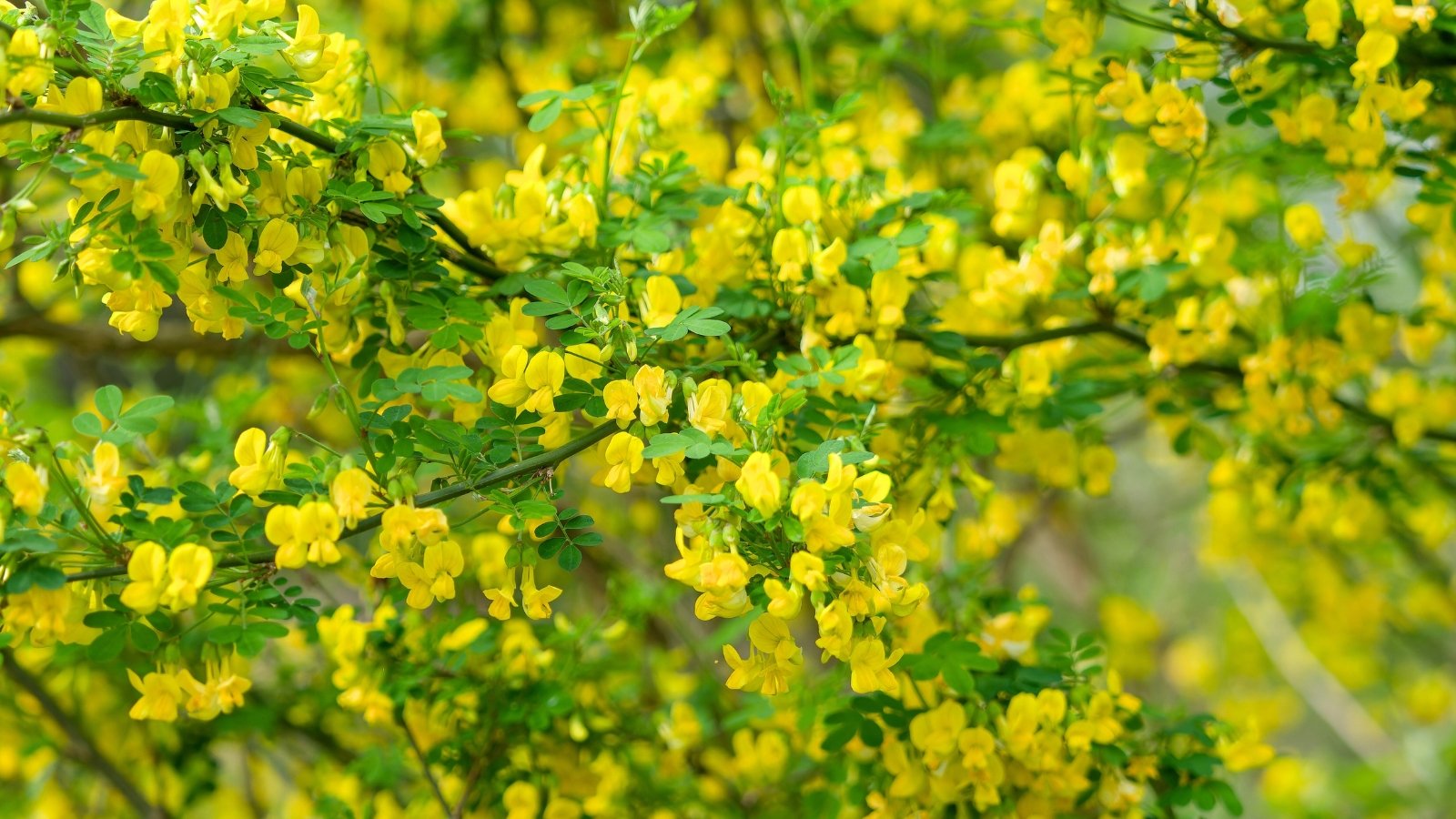 Puts on its best show where summers stay cool.
Puts on its best show where summers stay cool.Siberian pea-shrubs, given their native range, show the most vigor in climates with mild summers and cold winters. They perennialize in zones 2 through 7, with extreme heat and humidity being conditions the rugged grower doesn’t withstand.
Fertilizing
 No need for nutrient boosts to show its best.
No need for nutrient boosts to show its best.The tough Caragana is highly tolerant of infertile soils. It doesn’t need excess nitrogen or added nutrients to grow and produce.
Maintenance
 Quick growth means pruning helps keep it under control.
Quick growth means pruning helps keep it under control.The ornamental peas need little ongoing maintenance. Prune away branches to retain a standard form or shape the shrub. Remove suckering offshoots and crossing, diseased, or dying branches as they develop.
Siberian peas are moderate to fast growers, putting on one to three feet in the first year. Use clean, sharp pruners to make cuts just above a leaf node when pruning to promote branching from a central leader.
Propagation
Collecting and sowing seed, as well as cuttings, are the simplest propagation methods for Siberian pea shrub. You can also create seedlings through grafting, root cuttings, and layering.
From Seed
 Dry pods in low light before harvesting seeds carefully.
Dry pods in low light before harvesting seeds carefully.Collect the seeds as pods ripen in the summer for fresh sowing (usually late July-early August). Let them dry in a dim space until they begin to open. Crack them open to extract the seeds. Either sow them in fall, or simulate cold stratification in your refrigerator in moist media for about a month. Plant them fresh in pots, trays, or with direct sowing at ¼ to ½ inch deep.
If using stored seeds, soak them overnight and up to 24 hours until they swell prior to planting. Overwinter seedlings started indoors in a cold frame or protected space for transplanting in the spring.
Place the seeded trays or pots in a bright, warm spot near 70°F (21°C), and look for germination in two to three weeks.
Cuttings
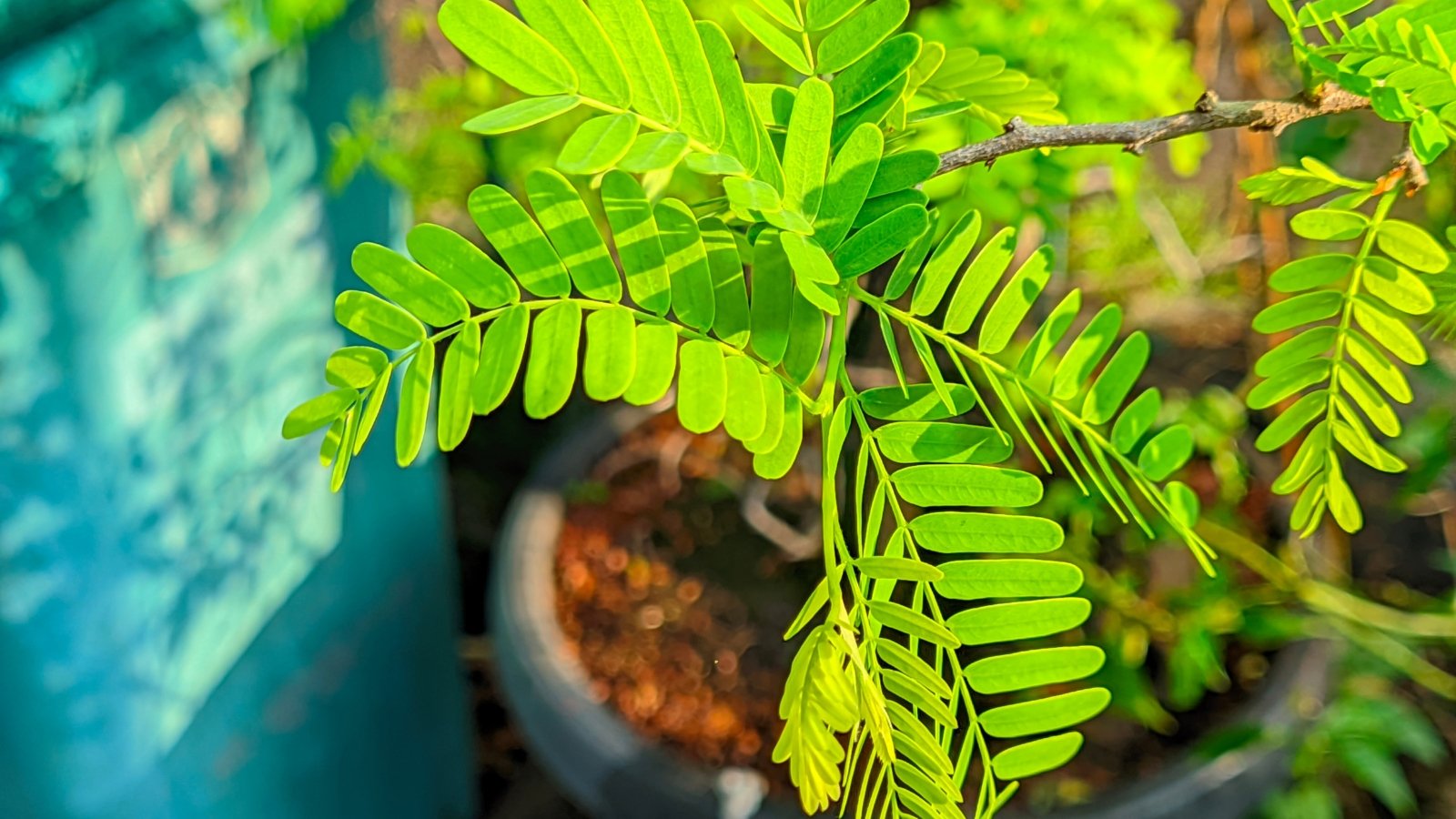 Plant cuttings deep in moist, well-draining potting mix.
Plant cuttings deep in moist, well-draining potting mix.Take cuttings between July and August, after flowering and seeding, for the best timing.
- Cut a four- to six-inch piece of healthy stem, including woodier pieces.
- Remove the foliage from the bottom ⅔ of the cutting (keeping at least two leaves intact). Keep cuttings moist until ready to pot.
- Optional: moisten the cutting and generously coat the lower stem with rooting hormone. Tap off any excess rooting powder.
- Plant the cutting in at least two inches of moist, well-draining potting mix.
- Place the pot in a bright, warm location, avoiding direct sunlight.
- Water as needed, keeping the soil evenly moist.
- When the cutting resists a gentle tug, roots are in place and ready to be repotted.
- Plant the cuttings in four-inch pots and move them outside in mild conditions. New plants will be tender.
Popular Varieties
A few varieties of contorted hazelnuts exist with varying features, like leaf color, for added interest.
‘Sutherland’
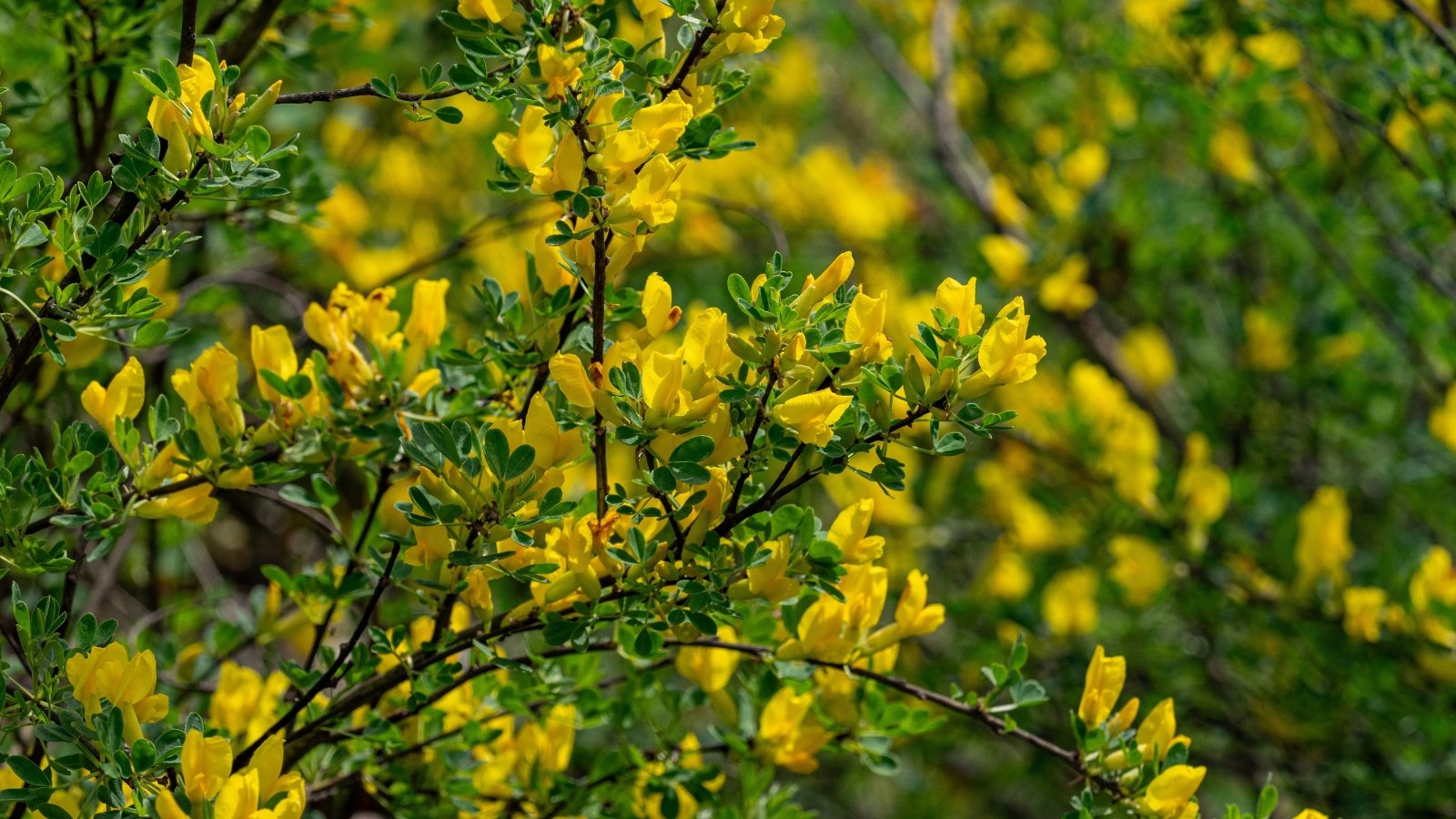 Tall and slim, fits beautifully in smaller yards.
Tall and slim, fits beautifully in smaller yards.‘Sutherland’ is a cultivar with a narrower, upright form than the species. The height is similar, at 12 to 16 feet tall, while the spread is a compact four to six feet on average. Very upright, columnar branching brings a structural habit that fits smaller spaces than the large-scale parent.
Reliably hardy to zone 3, ‘Sutherland’ has glossy olive bark that transitions to sienna as it matures. It brings vertical interest as a screen or single specimen.
‘Lorbergii’
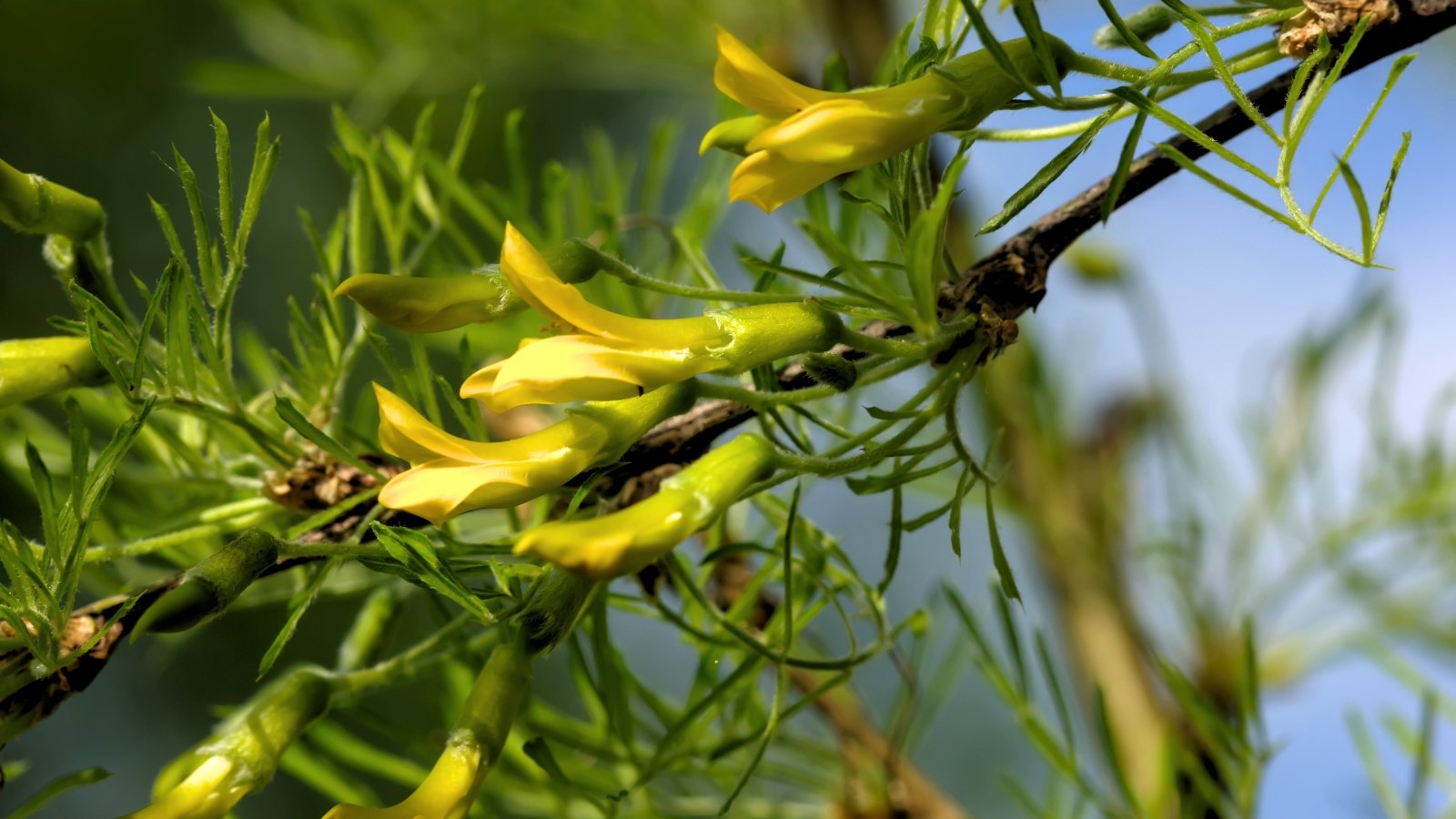 Leaves like slender grass bring old-world charm alive.
Leaves like slender grass bring old-world charm alive.‘Lorbergii’ brings a graceful habit and fine-textured foliage. Narrow leaves line the slightly arching branches. Each leaf is slender and grassy as opposed to the small, rounded legume-type leaves of the species.
‘Lorbergii’ is an old garden introduction from Berlin in the early 1900s. By 1913, it made its way to the prairies of the Midwest.
‘Walker’
 A weeping beauty that needs almost no pruning.
A weeping beauty that needs almost no pruning.‘Walker’ boasts the fine, ferny leaves of ‘Lohbergii’ on a heavily weeping form. The dwarf variety reaches only five to six feet tall and three to four feet wide. The compact, pendulous branching makes ‘Walker’ a single specimen to feature.
‘Walker’s’ branching stems from the top of the crown and grows nearly straight down, stopping about a foot from the ground for a tidy look, without the need for pruning to retain form. The variety is grafted onto a standard, single-trunk specimen of a certain height to produce the weeping form. Out of Manitoba’s Morden Research Station, ‘Walker’ is as hardy as the rest down to zone 2, or -50°F (-46°C).
Common Problems
Peashrubs have few pest or disease problems. Sapsuckers, beetles, and leaf spot can crop up during the growing season.
Sap-sucking Pests
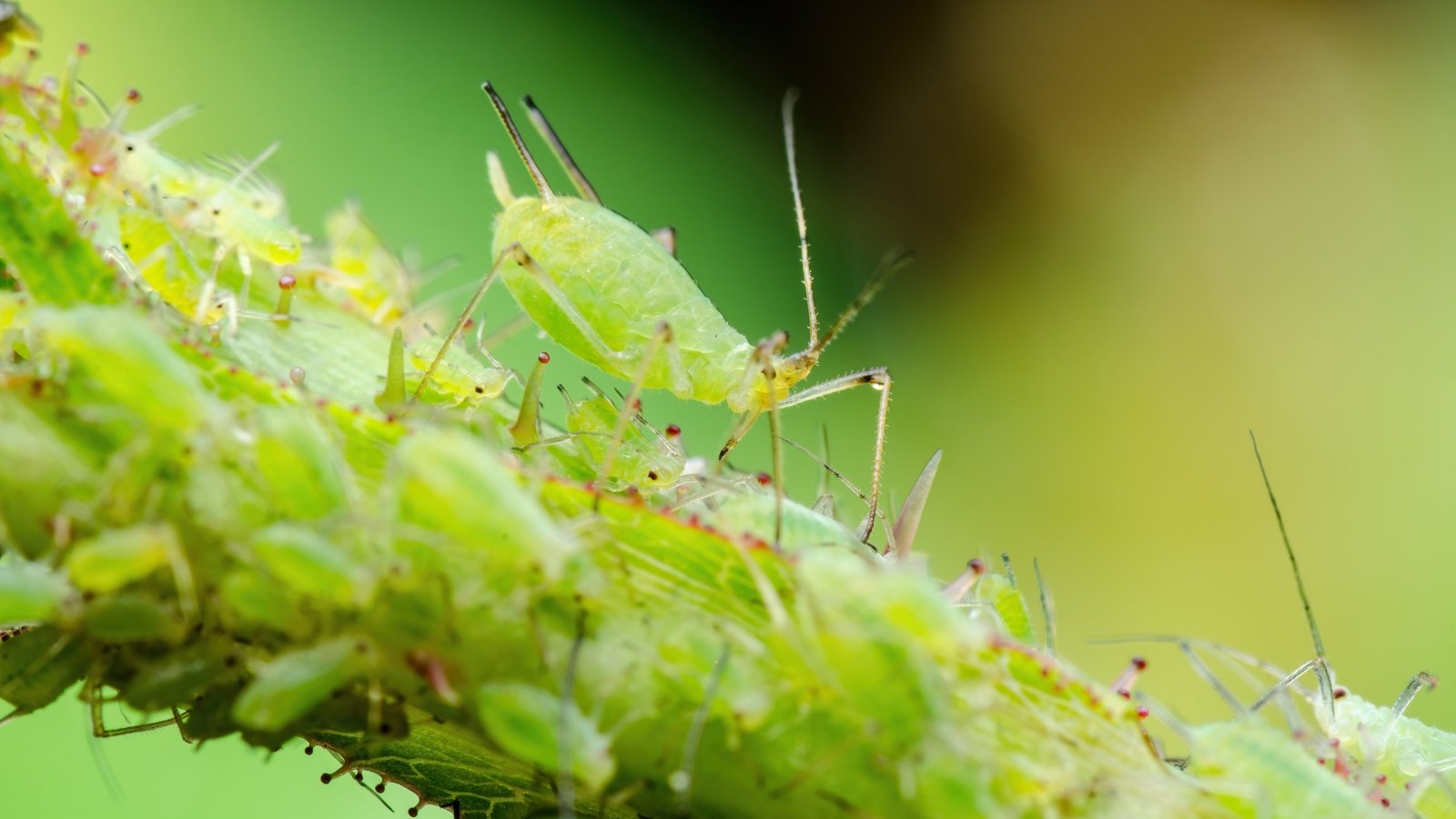 Sticky honeydew from aphids can attract unwanted mold.
Sticky honeydew from aphids can attract unwanted mold.Spider mites sometimes bother the woodies. They live on the undersides of leaves and show webbing and a light yellowing of leaf surfaces. They occur in dry and dusty conditions, particularly in plants experiencing drought stress. Beneficial predatory insects like ladybugs and predatory mites help control populations.
Aphids are common pests that often cause no damage, except in severe infestations. Signs of stress include curled leaves and stunted growth. You’ll spot the pear-shaped, soft-bodied insects in groups, and they leave behind a “honeydew” residue. The sticky substance can lead to black, sooty mold, which is unattractive and can block photosynthesis.
Aphids are vectors for diseases and viruses as they pierce plant parts. Foliage may curl and yellow, and growth may stunt in an aphid infestation. Leaf spot, mottling, and distortion may follow as signs of disease.
For aphids and mites, spray the plant with a strong stream of water to deter and knock insects off the stems. Horticultural oils and insecticidal soaps rid the plant of infestations, but be sure to follow label directions, as these affect beneficial insects as well.
Blister Beetles
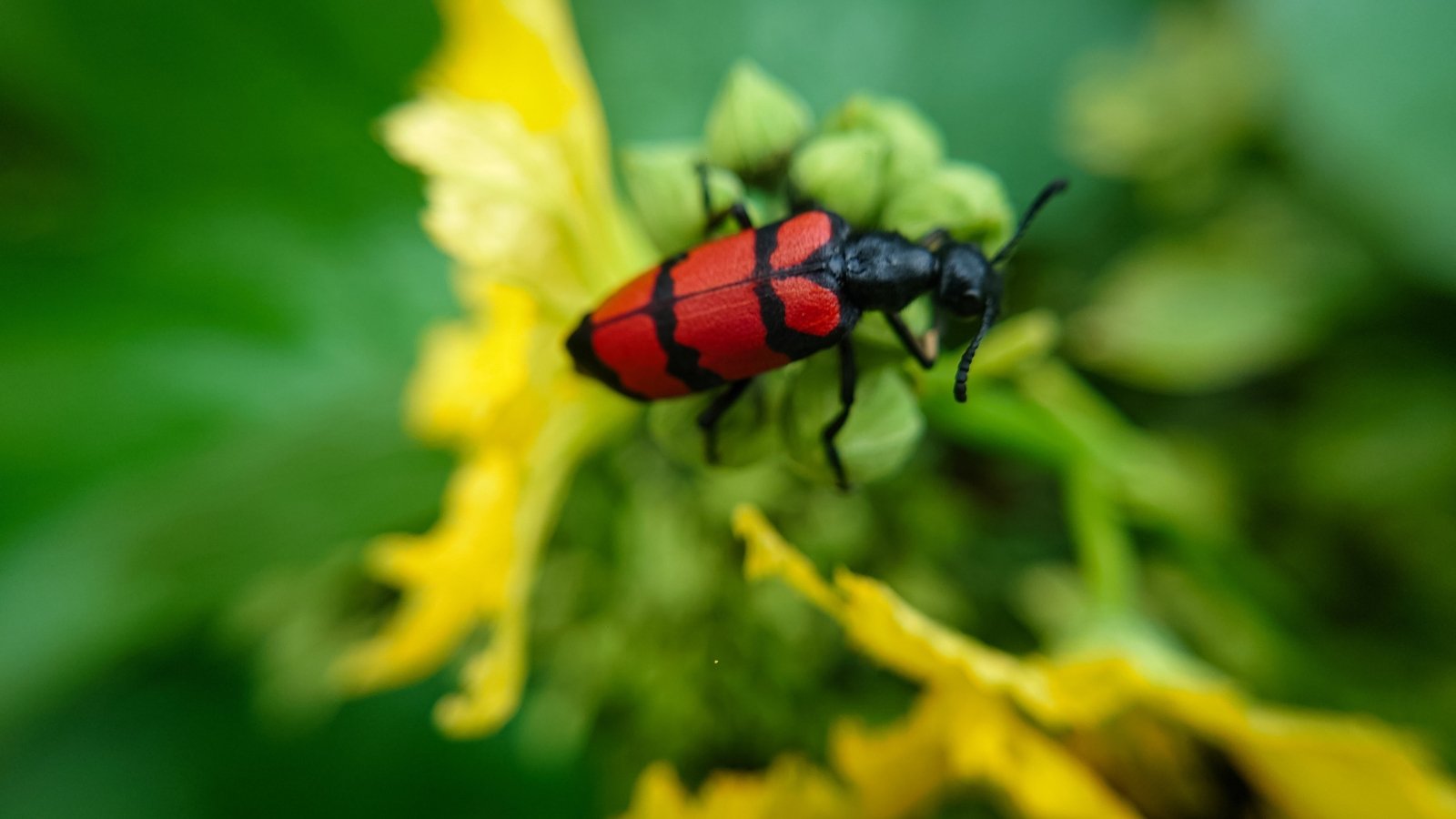 Dark beetles visit in summer before laying their eggs.
Dark beetles visit in summer before laying their eggs.Blister beetles can damage ornamentals and crops in a swarm, but they’re also beneficial predators, feeding on grasshopper eggs and other pests. Grasshoppers are another potential Caragana pest that does more widespread damage to other crops than the beetles.
Adult blister beetles are long and dark gray or black with colorful markings. They feed on foliage and flowers in the summer before laying eggs. It’s the larvae that feed on the eggs of other insects. The beetles likely won’t need management in the home landscape, but may attract large groups if planted in a perimeter around crops. Pyrethrin sprays can be effective in targeting the adults.
Diseases
 Removing diseased leaves early stops leaf spot from spreading.
Removing diseased leaves early stops leaf spot from spreading.Leaf spot is a common fungal infection that may appear on Siberian pea shrubs. Brown, dead spots, round and patchy, increase in size and number as they spread across leaves and stems, causing them to blacken.
Early detection is the best control for leaf spot. Cut off diseased areas and remove any that drop to avoid overwintering. Discarded the debris away from the garden to prevent the spread, keeping it out of the compost pile. Sanitize pruners while moving between plants. An alcohol wipe or a dip in a 70% isopropyl alcohol solution is handy while working.
Ample air circulation is the best defense against leaf spot. Also, water at the ground level rather than spraying the leaves to reduce damp conditions. Add a mulch layer to reduce soil splash during watering (and for other benefits like insulation, weed suppression, and moisture retention). Prune surrounding plants where appropriate to increase air circulation.
Frequently Asked Questions
Both the pods and the seeds are edible when cooked, historically as young vegetables. But the peas are more favorable to and can be eaten raw by livestock, chickens, and wildlife.
The top characteristic of the large shrub is its ability to grow in difficult situations. Cold hardy and adaptable to varying soils and exposures, it makes a good windbreak and boundary planting to protect other ornamentals and crops. It stabilizes soils in eroded sites, and fixes nitrogen. It also attracts pollinators and other beneficial insects with its spring blooms, as well as provides forage for birds and wildlife.
Because of its adaptability, even in lean and stark conditions, it is invasive in some parts of North America, including the Midwest. It began as a popular prairie planting and companion to agricultural crops, but with reseeding and suckering, it spreads in its optimal conditions.


 1 week ago
9
1 week ago
9





















 English (US) ·
English (US) ·  French (CA) ·
French (CA) ·